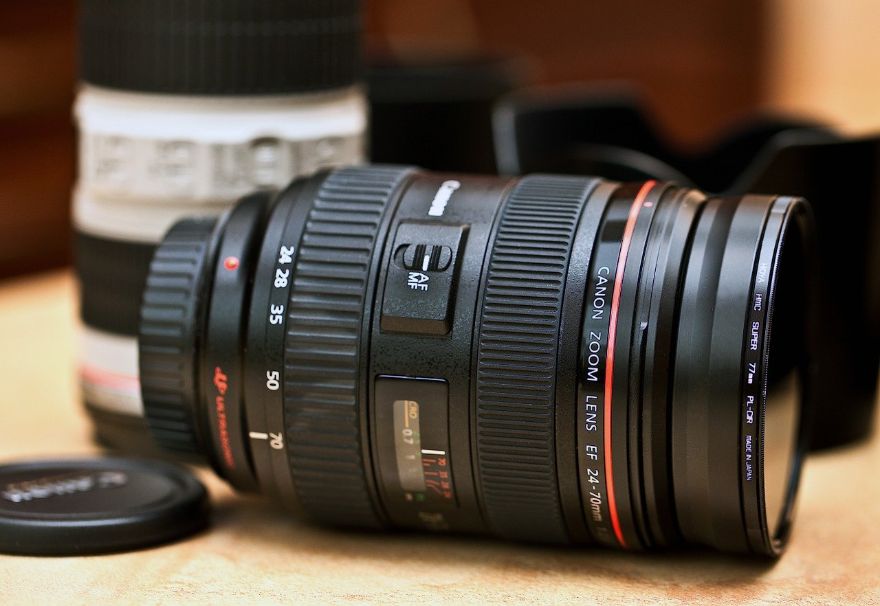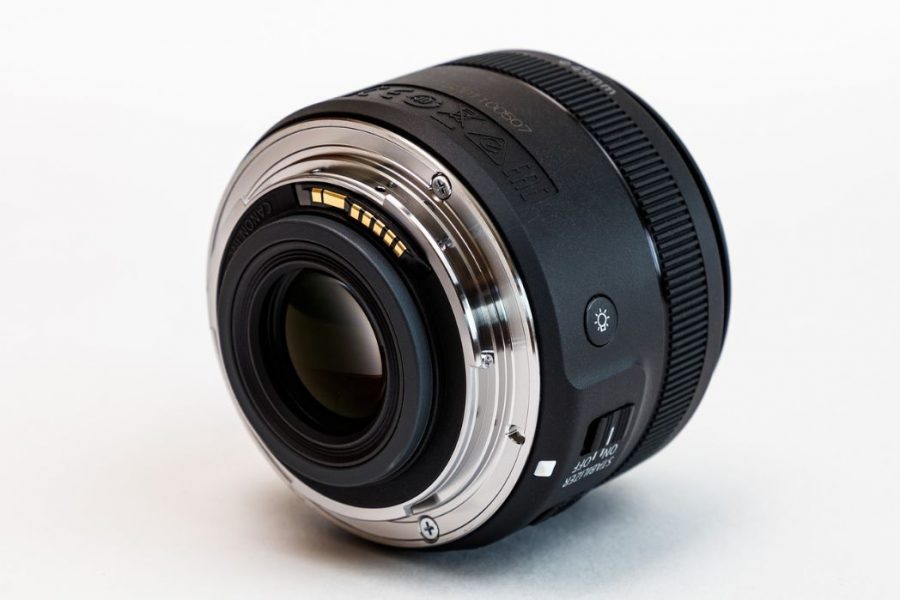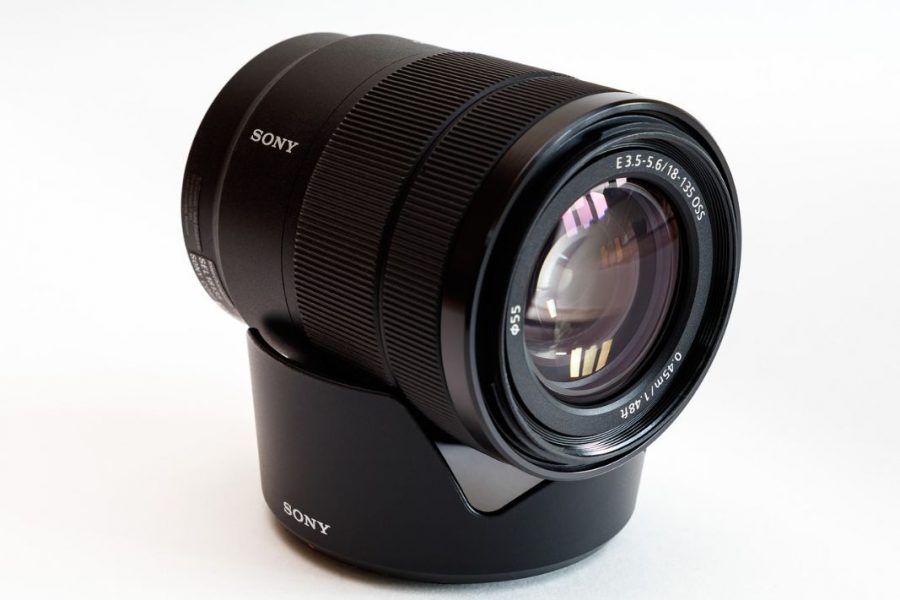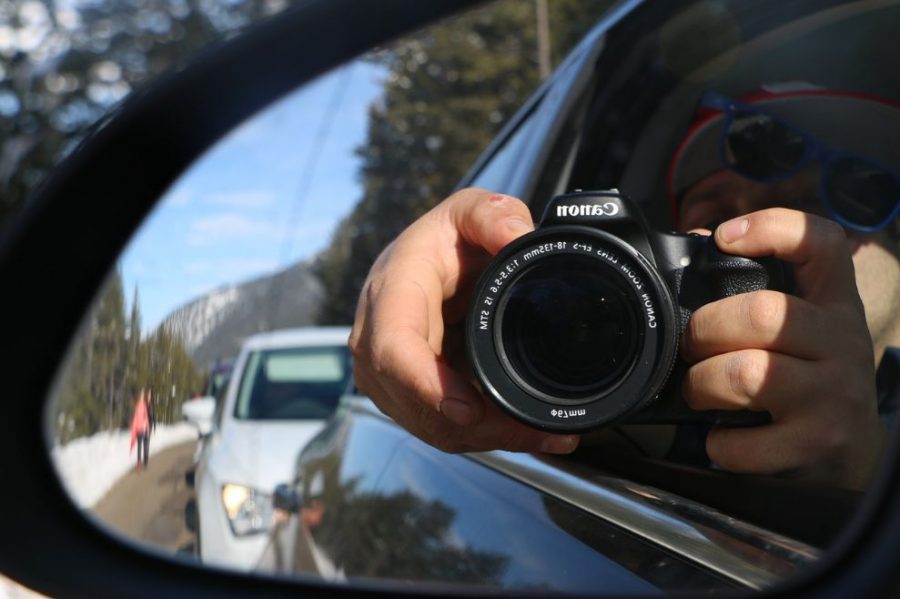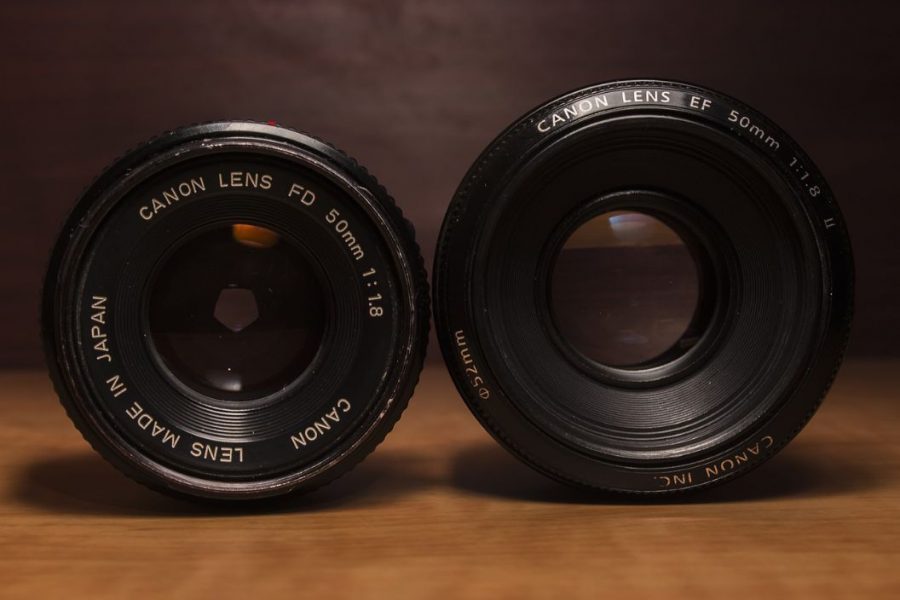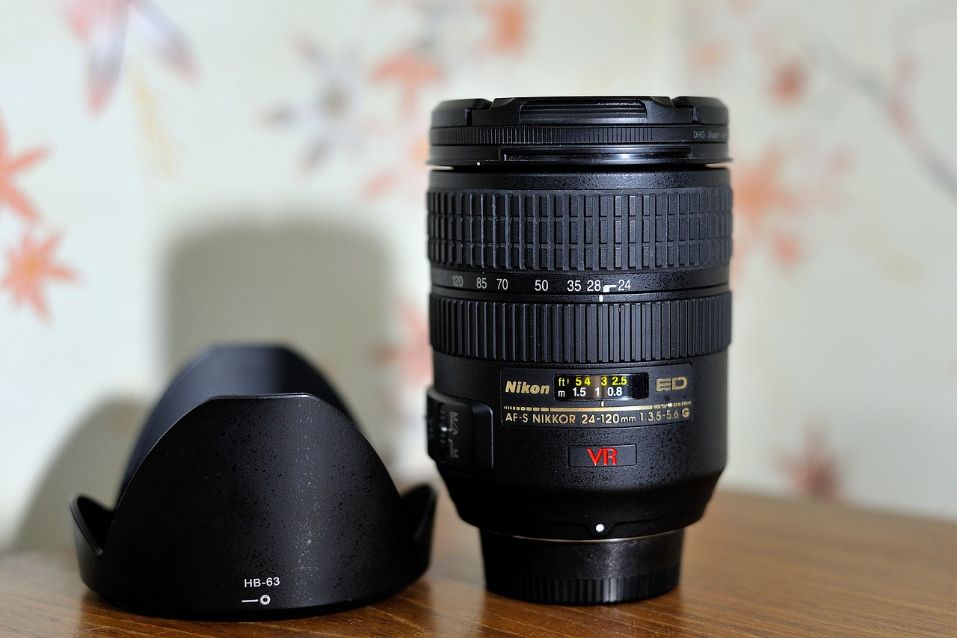Astrophotography may sound expensive but not always if you choose the right gear even within your budget range. It’s challenging to play without the right kit in low-light conditions, which is mandatory for cosmo photography.
So, what’s the right lens for taking vibrant pictures of the night sky? The lens needs to be wide-angle or prime, which should be the first consideration. Also, it should produce sharp images and have good control over chromatic aberrations. Apart from the camera settings, you need to be in the right place at the right time to get the best photo.
If you are interested in taking pictures of the night sky, the article aims to discuss the best canon lens for astrophotography.
Best Canon Lenses For Astrophotography: The Review
Best Overall: Canon EF 16–35mm f/2.8L III USM Lens
If you have a full-frame Canon DSLR, the Canon EF 16-35mm should be the ideal camera lens for canon 50mm 1.8 stm astrophotography. The high-performance L-series ultra-wide-angle zoom lens produces sharp images of the night sky.
The lens comes with an F2.8 aperture to provide superb control over depth of field, useful for low light blazing action. Two ultra-low dispersion (UD) lenses help reduce chromatic aberration. It helps to precise color execution, accurate edge-to-edge detail, and sharp contrast.
The upgraded model offers high-quality coatings, including Subwavelength Coating (SWC) and Air Sphere Coating (ASC), to significantly reduce flare and ghosting. The coatings ensure clean images with reduced aberrations from reflected light.
Being highly resistant to dust and water intrusion, the kit enables shooting even in harsh conditions. So, you don’t really need to care about the weather of the place you want to take pictures of. The EF 16–35mm also has a non-stick fluorine coating on the front and rear elements to maintain a clean lens.
When it comes to performance, the best telephoto lens for astrophotography provides sharpness and contrast to amaze you within the zoom range.
👍 Pros:
- Premium build quality
- Water and rust-resistant
- Fast and accurate AF
👎 Cons:
- Slightly less maximum viewing angle
Runner’s Up: Rokinon 14mm F2.8 Ultra-Wide Lens for Canon
If you prefer a prime lens to capture the night sky’s aesthetic images, then no other lens can beat Rokinon 14mm ultra-wide lens for Canon. The full-frame camera lens with an aperture range of F2.8 to F22 produces spectacular night sky images by letting more light to the sensor.
The lens is designed to provide a dramatic 115.7° view on full-frame cameras perfect for capturing amazing night sky views and landscapes. The lens also works well with DSLR and mirrorless cameras to provide approximately an angle of view of 90° with Canon APS-C cameras.
The ultra-wide-angle Rokinon utilizes multi-coating to reduce flare and ghosting while increasing light transmission and contrast. Its low coma helps to prevent chromatic aberration that looks like a comet’s tail occurring from a point source of light.
Speaking of build quality, Rokinon lenses have been synonymous with unparalleled quality and integrity by providing innovative products at affordable prices. Also, being a prime lens, the 14mm ultra-wide device produces sharper, lighter images and can work in lower lighting conditions than zoom lenses.
👍 Pros:
- Ultra-wide angle of view
- Low flare and ghosting
- Wide aperture
- Better control over chromatic aberration
👎 Cons:
- Doesn’t focus to infinity
Best Budget: Samyang 14mm F2.8 Ultra-Wide Fixed Angle Lens for Canon
If canon ef 50mm f 1.8 stm lens astrophotography seems expensive, here we bring the least expensive product for you. It enables your long-cherished dream of capturing the beautiful night sky to life. The Samyang 14mm ultra-wide lens offers the best performance as all other lenses on the list, regardless of its low price.
Samyang 14mm comes with an F2.8 wide aperture that allows more light to enter, resulting in amazing night sky images. The ultra-wide lens provides a wide frame perfect for landscape photography. The advanced 14 elements 10 group design focuses on a close 11″ to produce high-pitched images with the least amount of distortion and chromatic aberrations.
The Samyang camera kit is coated with multi-coating to reduce flare and ghosting. It helps to prevent image degrading haze, low contrast, and artifacts from bright light sources. Also, the low coma helps to prevent chromatic aberration to provide sharp images.
The prime lens is built sturdily for razor-sharp images. Moreover, it doesn’t have to overcome all of the additional problems encountered with the extra glass and mechanics required to zoom.
👍 Pros:
- Coated with UMC coating
- Offers ultra-wide viewing angle
- Better control over chromatic aberration
- Affordable
👎 Cons:
- Manual mode only
- Images get blurry at the edges
Tamron SP 15-30mm f/2.8 Wide-Angle Lens for Canon EF Cameras
If you are looking for the best-stabilized canon lens, the Tamron SP 15-30mm offers superb image quality and performance by ensuring top-class stabilization.
The 15-30mm zoom range offers versatility in all photographic situations. Having an optical construction of 18 elements in 13 groups, aberrations such as geometrical distortion and lateral color are efficiently compensated.
With expanded glass molded spherical (XGM) element and several low dispersion (LD) glass elements in the system, the zoom lens delivers outstanding image quality from corner to corner. A fluorine coating is also applied to the front element to repel water or any dirt. This makes it easier to remove such stain when contaminated.
Tamron’s ultrasonic silent drive provides tack-sharp images due to the high torque and fast response speed with the least amount of lag time. Equipped with a full-time manual focus mechanism in AF mode, fine focus adjustments are possible without exiting AF mode.
👍 Pros:
- Great image stabilization
- Brilliant sharpness corner to corner
- Fast focus
👎 Cons:
- Heavyweight
- Blurry photos using auto-bracketing
Best Canon lens for APS-C Cameras: Canon EF 50mm f/1.8 STM Lens
Thinking of owning a prime lens for your APS-C camera? You can look for the Canon EF 50mm lens that lets in more than eight times the amount of light compared to the standard zoom lens provided with your EOS. The feature results in sharper images with less motion blur in dimly lit conditions, so you can easily capture the dark sky images.
The 50mm focal length allows taking pictures of any particular astronomical objects. The near-silent stepping motor (STM) technology focuses extremely quickly while shooting photos. So, you don’t miss any movement anytime.
Let’s say you are recording the views of the night sky. In that case, STM helps deliver steady and quiet continuous focus to keep your movies smooth. Also, soundtracks only capture the surrounding sounds and not even the noise of the focusing motor.
The Canon EF 50mm is very lightweight to be carried easily to the place you want to capture mesmerizing night views. The improved lens arrangement with new lens coatings help render images with excellent color balance and minimize ghosting and flare. Canon’s most compact 50mm lens, the EF 50mm f/1.8 STM, comes with a rugged metal mount to last long.
👍 Pros:
- Allows more light than the standard zoom lens
- Lightweight and affordable
- Can focus very quickly
👎 Cons:
- No image stabilization
- Focal length isn’t wide enough
Best Canon Lens For Astrophotography: The Buying Guide
Not all lenses are capable of capturing wonderful images of the milky way. Everyone must agree that several critical factors must be considered before buying a lens for that. However, if you are interested in buying one, our review has your back.
Here, we bring some of the vital factors you need to consider before buying a lens for canon 50mm 1.8 stm. You should go through them before wasting your hard-earned money.
Focal length:
If you want to capture nightscape photos and landscapes of astronomical objects, you would usually go for a wide-angle lens. If you use an APS-C or cropping camera, 24mm focal length or less should be the best in the business. On the other hand, a focal length of 35mm or less produces the best result for full-frame cameras.
A wide-angle lens allows you to frame more area of the night sky by offering a larger field of view. It can collect more light from the larger sky that helps compromise to a small clear aperture.
A long shutter speed can result in blurring the stars on a wide-angle lens as they move continuously. However, a short focal length on a wide-angle lens allows for long shutter speeds with no star trails.
The smaller the focal length gets, the wider the angle becomes. With a relatively bigger frame, a wider-angle lens gets a certain amount of time before the earth rotates enough to start a trail of the stars across the frame. The time reduces as the focal length increases because of the shorter frames they offer.
Aperture:
Aperture controls how much light enters the sensor. A narrow aperture lens with a longer focal length doesn’t produce the best images with a shorter shutter speed to avoid star trailing. On the contrary, a wider aperture lens can use a shorter shutter speed and lower ISO to capture an image with less noise. That means lenses with wider aperture are better for astrophotography. But the lenses very often come with a great price tag. If you can buy one, that would be worthy enough.
Coma and Chromatic Aberration:
The best canon telephoto lens for canon 50mm 1.8 stm should have better control over coma and chromatic aberration. These are the most important factors for clicking the best images of the milky way. They refer to the minor distortion of light you get while capturing in low-light conditions.
The coma and chromatic aberration cause the stars to appear as slightly odd shapes. The phenomenon especially occurs towards the frame’s edge. If a lens can better suppress the phenomena with better chemical coating or premium quality glass, it will produce clearer images.
Manual Focus:
The feature enables you to adjust the focus, depending on your desire. Not all lenses offer the feature that allows the photographer to play with the focal length range. That’s how photographers’ individualism arises as they can customize the picture with the focus as their wishes.
Image Stabilization:
Most advanced camera lenses come with the feature to stabilize output, ignoring slightly shaky effects. When you are capturing photos on an uneven surface, there are high chances to get a blurry effect in the images. Image stabilization automatically reduces the effect and present sharper photos.
Prime or Zoom Lens:
Generalizing the best type of lens is difficult as it largely depends on what type of shots you are intended to take.
Prime lenses are broadly fixed focal length lenses that are great for landscape milky way photography shots. You can also include background features. Zoom lenses, on the other hand, provide you a range of focal lengths. They are tough to focus at infinity for both night sky and landscape photography.
Lenses with a focal range of 10 to 14mm can capture the whole milky way. Once you get one over 24mm or above, you may not get the full width of it.
Astrophotography Techniques
The idea of taking pictures of the night sky isn’t a new one. The alliance of scientists and photographers basically developed it. There are two traditional techniques used for astrophotography. The first one uses traditional DSLRs with tripods and lenses. The second one includes attaching your camera directly to the telescope.
Using lens and a Tripod: The simple and straightforward way makes it easy for all to go somewhere and capture beautiful sky photos. As the technique requires less equipment, it’s easy to travel with your bags using this one. The important thing is to choose a lens capable of taking bright images in dark conditions. Also, a wide-angle lens is well recommended to get a maximum field of view. Get the best camera for astrophotography and start on your way.
Attaching Camera to Telescope: A telescope has excellent magnifying power. Attaching your camera to the telescope can be a great option to capture night views. The technique is expensive because of using a telescope.
The process is also perfect for those who want a permanent setup rather than traveling to a place for astrophotography. You need to attach the camera to the telescope via an adapter. Different manufacturers adopt different ways to attach lenses to the camera body. So, it’s important to match the adapter with the camera’s mounting system.
Frequently Asked Question (FAQs)
what focal length is best for astrophotography?
Ideally, a wind angle lens is perfect for astrophotography. 24mm or shorter focal length will do good for APS-c cameras, and 35mm or shorter is good for full-frame cameras. However, sticking to 14-20mm is the best to get the best result.
what is optical image stabilization?
An optical image stabilization (OIS) is a mechanism used in most advanced camera lenses to stabilize the recorded image. OIS controls the image’s path through the lens onto the image sensor.
Telescope or lens for astrophotography?
You can use both telescope or only lens for capturing beautiful pictures. Using a telescope is expensive and better for a permanent setup. The other one is simple and travels friendly.
Verdict
In the world of photography, canon 50mm 1.8 stm may sound luxurious. It is perhaps because of the requirement of high-end camera lenses and additional kits. However, you can still take great pictures of the night sky using low-budget lenses. Just make sure the lenses are compatible with that. After reading our buying guide, we hope you will be able to buy the best canon lens for astrophotography for you.
Our article also illustrated some of the top-class lenses for Canon cameras capable of meeting your need. Get any one of those to cross your limit.






